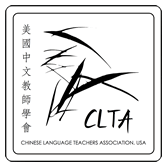Editor’s Welcome
More than one year has passed since we began brainstorming about the journal K-12 Chinese Language Teaching. The timing was right, with the booming of Chinese language programs in the United States. As a foreign language, Chinese appears in curricula not only at universities but at pre-K / K-12 schools as well. Therefore, teaching Chinese is no longer a matter of crossing a river by feeling the stones, but an established and growing academic discipline. Research in K-12 Chinese language pedagogy has been correspondingly increasing in terms of establishing pedagogical foundations for Chinese language programs such as traditional programs or Flagship programs at the tertiary level, as well as immersion, StarTalk, Heritage, and AP Chinese programs at pre-K / K-12 levels. Universities that offer Chinese language teacher certification programs have focused on challenging subject matters such as curriculum design, classroom management, teaching methodologies, educational policies, and social and emotional development, particularly challenging to native Chinese student teachers because of cross-cultural differences in educational theories. Regional teacher training workshops frequently bring in new ideas by cross-state scholars, senior K-12 teachers, and university professors. We need a practical space to converge theories and practices for the purpose of exchanging ideas between scholars and practitioners across the country to facilitate Chinese teachers’ professional development.
K-12 Chinese Language Teaching offers a platform that welcomes researchers to present academic ideas and latest research outcomes, provides opportunities for Pre-K and K-12 teachers to share and gain teaching tips, and encourages introductions of regional Chinese language program policies and program performance, and textbook compiling and use. Comprehensive as it is, it can play the role of linking together researchers, professors, Pre-K, and K-12 Chinese teachers in terms of Chinese Pre-K / K-12 Chinese language program development in the United States and other countries and more importantly teachers’ professional development.
For this inaugural issue, I sincerely appreciate the substantial preparation work by the CLTA Steering Committee, the strong support and collaboration of the CLASS, encouragement and facilitation from the journal’s Editorial Board, and the hard work of our Editing / Review Team over the past year. I would like to thank them all for having made great efforts to make this journal a reality. However, it is only the first step in the long march, as the Chinese saying goes, and we expect to see excellent articles contributed to the journal in the years to come.
编辑寄语:
亲爱的读者,历经一年多时间的精心筹备,全美中文教师学会的又一项教学科研经验分享平台《中小学汉语教学》终于面世了。我们热情欢迎各位汉语老师及时分享最新的中小学汉语教学研究成果,并积极展示多样化的汉语教学心得与体会。
每一种语言,都有自己的结构特性和文化特性。汉语从语音、词汇、语法规则、语义语用表达、文字结构,到其承载的文化,都具有自己的规律。如何将其深入浅出地带入不同文化传统的课堂,不仅是个挑战,而且是需要智慧、技巧、实践和敬业精神来完成的一门艺术。固然,在教学实践中请教其他语种的教师,在教学法上部分地采取拿来主义,是一个捷径;但若在教学法上知其所以然、追索理论源头和其完整的应用理论,就能成就一个有智慧的行动研究者、一个优秀的教师,而不致沦落为一个机械的教书匠。
优秀的汉语教师,首先懂得欣赏汉语,进而充满激情地去思考汉语、分析汉语,不断加固自己的汉语本体知识,并设法在教学中以不同的方式去诠释汉语, 最终收获令学生满意、令自己欣慰的教学成果。
《中小学汉语教学》提供的就是这样一个交流汉语教学研究经验的有效平台,希望由此可以汇集全美乃至全球汉语教师的智慧和努力,促进中小学汉语教师的职业发展,并进一步推动各地的汉语项目蓬勃发展。
